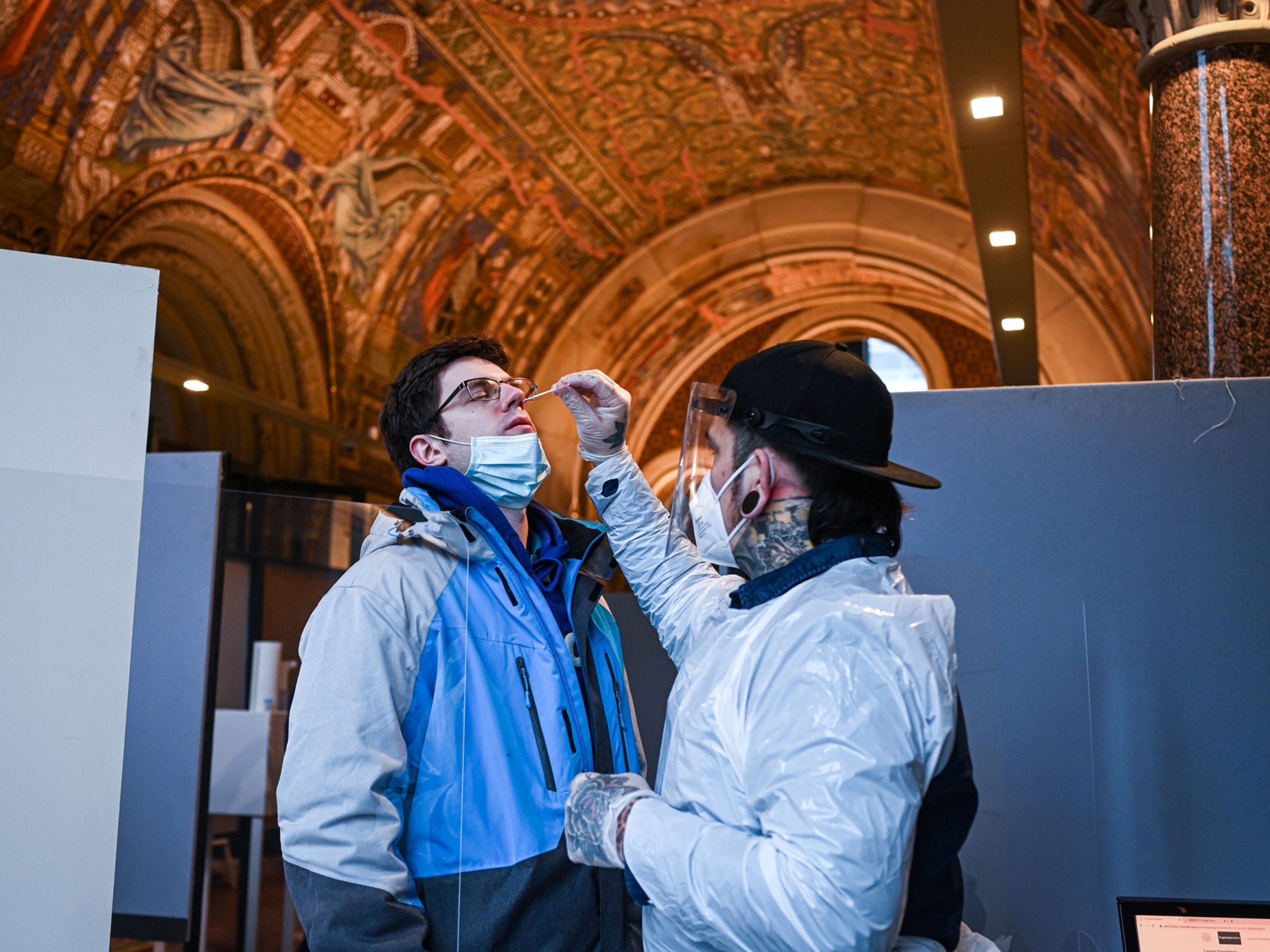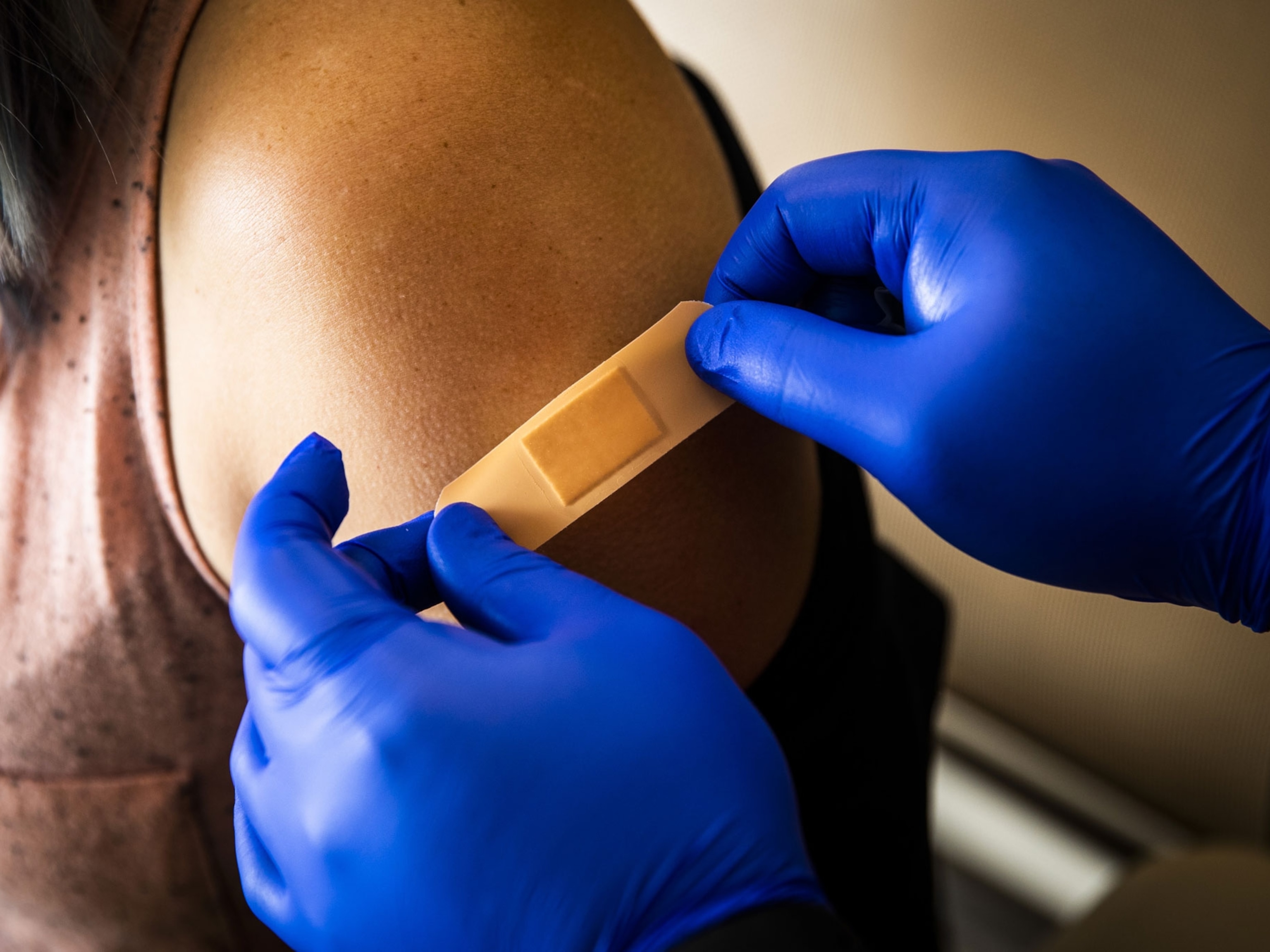
COVID-19 has tested us. Will we be ready for the next pandemic?
An infectious disease expert with insider access gives his take on what we did well, what we need to fix, and how to prepare for future outbreaks.
In A Tale of Two Cities, Charles Dickens’s 1859 novel set during the French Revolution, he wrote: “It was the best of times, it was the worst of times, it was the age of wisdom, it was the age of foolishness.” Such has been the case with the COVID-19 pandemic.
On the one hand, science saved lives. Less than a year after the virus was identified, the United States had created and tested vaccines. Then it determined how to mass-produce, mass-distribute, and mass-administer them at no cost to the public—without a preexisting infrastructure in place for mass-vaccinating adults. COVID vaccines are estimated to have saved at least 3.2 million lives in the U.S. alone. These accomplishments offer hope for how quickly we can respond to the next pandemic.
On the other hand, public health officials had inadvertently leaned into a libertarian left hook. About 30 states have now passed laws limiting health authorities from imposing protective measures without permission from state legislators. “One day we’re going to have a really bad global crisis and a pandemic far worse than COVID, and we’ll look to the government to protect us, but it’ll have its hands behind its back and a blindfold on,” Lawrence Gostin, faculty director of Georgetown University’s O’Neill Institute for National and Global Health Law, told the Washington Post. “We’ll die with our rights on—we want liberty, but we don’t want protection.”
How exactly did we get here? In 2020 I was an attending physician in the Division of Infectious Diseases at Children’s Hospital of Philadelphia. Then I was asked by Francis Collins, a doctor and head of the National Institutes of Health, to be part of a group that advised pharmaceutical companies on how best to construct and test COVID vaccines. I have also been a voting member on the Food and Drug Administration’s Vaccine Advisory Committee since 2017.
Because of my role on these bodies, I was often asked to appear on network news programs and morning shows to explain events that were unfolding in real time. I was frequently quoted in the media, and like many in my position, I felt an enormous responsibility to get things right. As the pandemic progressed, however, we found that we weren’t always right, because our decisions were often based on incomplete information. At times we would give conflicting recommendations, and as a result, many Americans lost faith in the institutions and the individuals responsible for protecting the public.
But perhaps our experiences with SARS-CoV-2—which so far has killed some seven million people worldwide—can prepare us to cope better with the next pandemic. We should heed these lessons.
Vaccinating the world is in everyone's self interest
The United States has the technological capacity and resources to vaccinate the world, and it wouldn’t necessarily be an altruistic act. SARS-CoV-2 will continue to circulate and continue to create variants for decades to come. Indeed, at the end of 2023, nearly one-third of the people living on the planet had not received a single dose of a COVID vaccine. The degree to which any country is at risk for severe disease is the degree to which we’re all at risk. No one is safe until everyone is safe.
The scientific process truly is a process
Recommendations for the treatment and prevention of COVID have evolved as we’ve learned more about how the virus is transmitted and who is at greatest risk. At first people were told to wash hands constantly and clean surfaces and store-bought items. Eventually it became clear that while masking was important, washing and cleaning had a lesser impact. Scientists, clinicians, and public health officials should be more careful about informing the public that all recommendations are based on what we know at the time and that things might change. Otherwise the fluidity of scientific knowledge will remain disconcerting.
Grassroots campaigns can build real trust
Although countering misinformation at a national or statewide scale is virtually impossible, it is possible at a local level. During the pandemic, Ala Stanford showed us how. She and her Black Doctors COVID-19 Consortium sat in people’s homes in North Philadelphia and provided residents with a consistent and trustworthy source of information. In a community resistant to vaccination, she and her colleagues reassured and educated more than 50,000 to vaccinate themselves and their children.
Separating partisan politics and science will save lives
For the first time in human history, deaths from a vaccine-preventable disease were divided along party lines. As of December 2022, 37 percent of Republicans but only 9 percent of Democrats were unvaccinated. And according to a study published in the journal Preventive Medicine Reports, counties in states governed by Republicans had higher rates of mortality from COVID. Because it’s about resources and values, public health will always to some extent be political. But it doesn’t have to be partisan—something all political parties should keep in mind.
Stopping the spread of misinformation is crucial
Good luck with this one. It’s like trying to clean up the flooding from Hurricane Katrina with a plastic cup. Early in the pandemic, key public health and government officials claimed that COVID was human-made—something that had never happened before in the history of the world. If you believe Carl Sagan’s statement that “extraordinary claims require extraordinary evidence,” then this was an extraordinary claim backed by no direct evidence—only conspiracy and innuendo.
Always prioritize the most vulnerable
Everyone at every age is susceptible to COVID, but not everyone is equally susceptible to serious illness. Older adults suffered a death rate about a thousandfold greater than children; at times, as many as 40 percent of COVID deaths in the U.S. occurred in nursing homes. Similarly, studies of booster dosing showed that those most likely to benefit included people over 75, people with multiple health problems, those who were immunocompromised, and those who were pregnant. For as long as this virus circulates, the primary focus should be on protecting these four groups.
(Multiple COVID infections can lead to chronic health issues. Here’s what to know.)
The cure shouldn't be worse than the disease
At first, the only strategy for decreasing COVID was to limit human-to-human contact. We closed businesses and shuttered schools. No one paid a bigger price for this approach than children, who suffered severely from the lack of education and socialization. The effect of these deficits will no doubt be felt for years to come. Our interest in getting children back to school should have been just as intense as our interest in getting people back to work. Indeed, at the beginning of the pandemic, the American Academy of Pediatrics strongly advocated for a return to in-person classes for students, detailing steps and considerations. This, as it turned out, was probably the best advice.
Working together makes us stronger
Perhaps the brightest point of light during the pandemic was Operation Warp Speed. Only 11 months after SARS-CoV-2 was isolated, two vaccines had been tested in large clinical trials and found to be both effective and safe. Later the White House successfully partnered with pharmacies and hospitals to distribute and administer vaccines, as well as to provide test kits and antivirals. It was an amazing effort and bodes well for our ability to create and distribute vaccines against future pandemic viruses.
America has a long history of banding together. During the 1940s and 1950s, polio was a feared and devastating infection. Americans responded by sending their dimes to the National Foundation for Infantile Paralysis, otherwise known as the March of Dimes. The organization received millions of dollars, which led to a vaccine that over time eliminated the disease from most of the world. We saw polio for what it was: a shared tragedy.
On September 11, 2001, planes hijacked by Islamist terrorists crashed into the World Trade Center, the Pentagon, and a field in Pennsylvania, killing 2,977 people. Police and firefighters rushed into the collapsing buildings. We all hugged each other and cried, once again united by a shared national tragedy. To further unite us, President George W. Bush made it clear that this event had nothing to do with Muslim Americans. “The face of terror is not the true faith of Islam,” he said. Again we were all in this together.
On January 20, 2020, the first case of SARS-CoV-2 was confirmed in the United States. Since then, more than a million Americans have lost their lives to this virus. Using a novel technology, we created safe and effective vaccines in record time. Nurses and doctors worked extra hours, even without proper personal protective equipment. It was all hands on deck. Again we responded to a national tragedy. We saw ourselves as part of a whole.
It’s in us. We can do this. When we see ourselves as part of something greater, we tap into the better angels of our nature.
This story appears in the February 2024 issue of National Geographic magazine.
Related Topics
You May Also Like
Go Further
Animals
- What would the world look like without mosquitoes?What would the world look like without mosquitoes?
- Social media loves to villainize dolphins. Here's why it's wrong.Social media loves to villainize dolphins. Here's why it's wrong.
- How did wolves evolve into dogs? New fossils provide cluesHow did wolves evolve into dogs? New fossils provide clues
- This unorthodox method is saving baby parrots from extinctionThis unorthodox method is saving baby parrots from extinction
- A deadly disease that affects cats big and small found in U.S.A deadly disease that affects cats big and small found in U.S.
Environment
- ‘Corn sweat’—and other weird weather phenomena—explained‘Corn sweat’—and other weird weather phenomena—explained
- A sea tornado sank a yacht. We might see them more often.A sea tornado sank a yacht. We might see them more often.
- How billions of dollars are revolutionizing ocean explorationHow billions of dollars are revolutionizing ocean exploration
- Where to go stargazing in Chile according to a local astronomer
- Paid Content
Where to go stargazing in Chile according to a local astronomer
History & Culture
- Did Babe Ruth really ‘call’ this legendary home run?Did Babe Ruth really ‘call’ this legendary home run?
- The real history behind the legend of China's Monkey KingThe real history behind the legend of China's Monkey King
- How new technology transformed the American workforceHow new technology transformed the American workforce
- This secret Civil War sabotage mission was doomed from the startThis secret Civil War sabotage mission was doomed from the start
- This rare burial site reveals secrets about the Sahara's lush pastThis rare burial site reveals secrets about the Sahara's lush past
Science
- Why some say tennis is 'the world's healthiest sport'Why some say tennis is 'the world's healthiest sport'
- Your body ages rapidly at 44 and 60. Here's how to prepare.Your body ages rapidly at 44 and 60. Here's how to prepare.
- How do gold nuggets form? Earthquakes may be the keyHow do gold nuggets form? Earthquakes may be the key
- Astronauts getting stuck in space is more common than you thinkAstronauts getting stuck in space is more common than you think
Travel
- These are the must-see sights of Italy's Veneto regionThese are the must-see sights of Italy's Veneto region
- A guide to St John's, Atlantic Canada's iceberg capitalA guide to St John's, Atlantic Canada's iceberg capital








